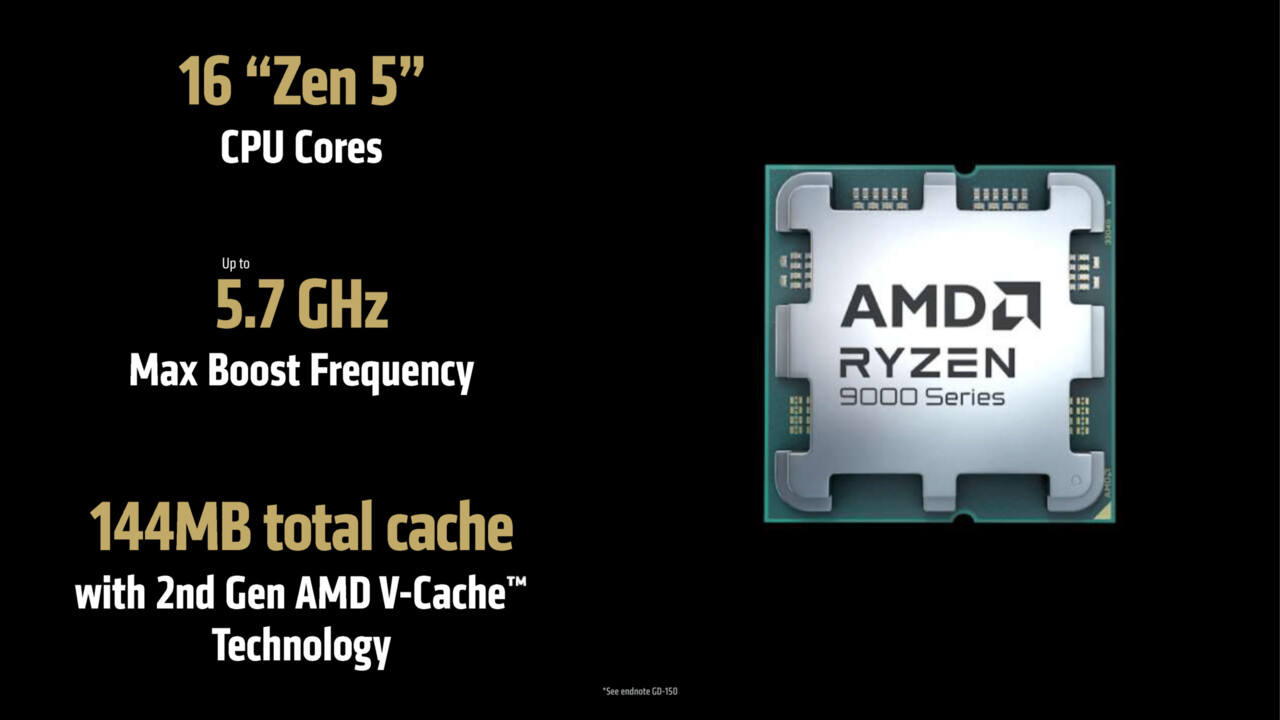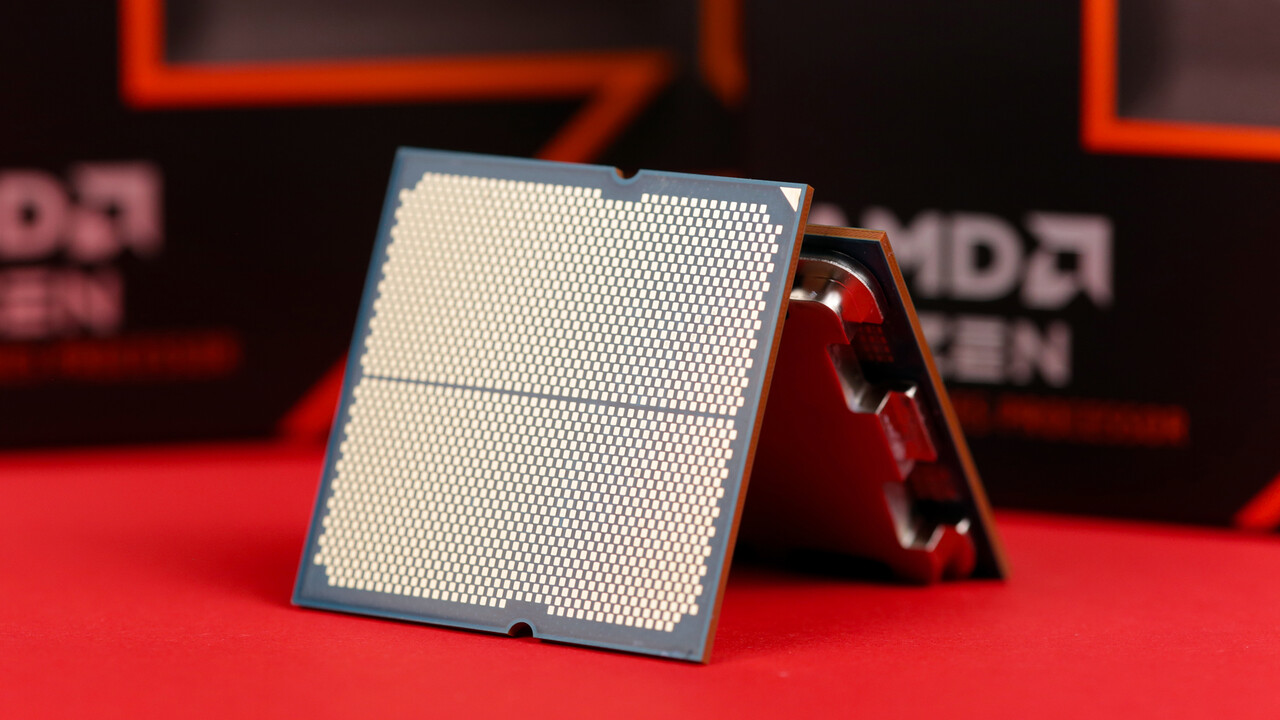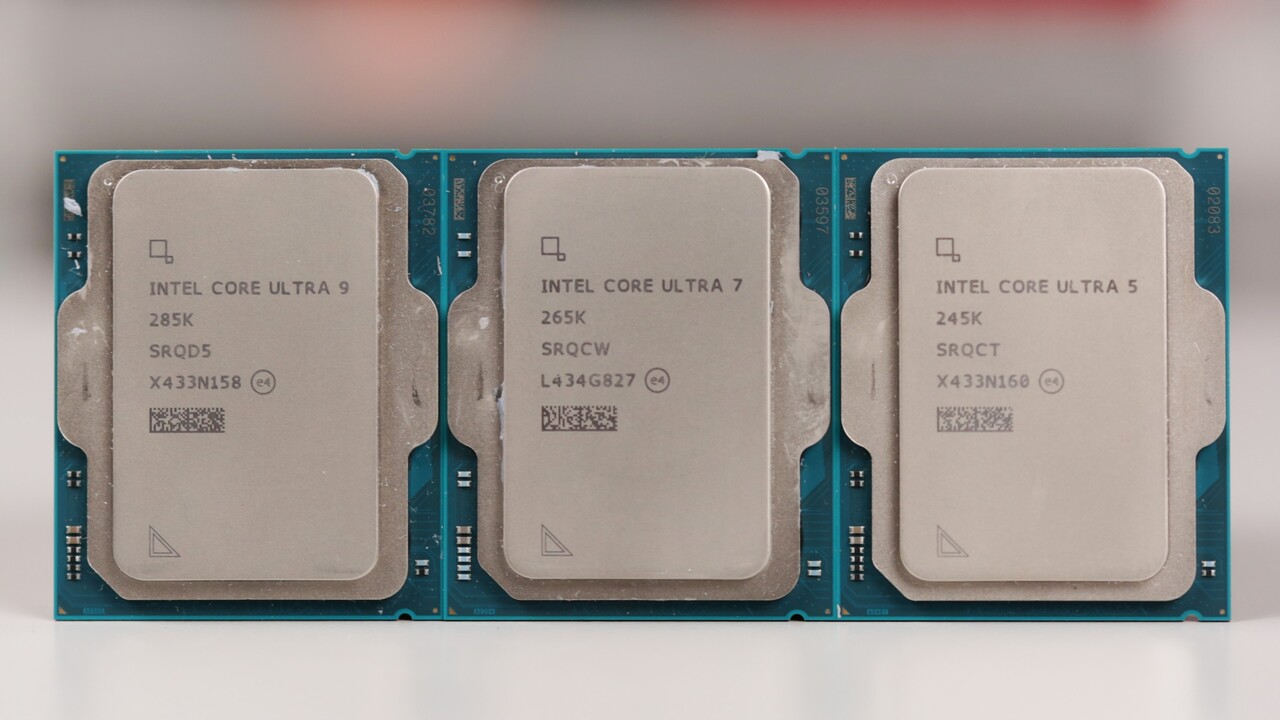Ryzen 9 9950X3D & 9900X3D: AMD explains why there is still only one X3D chipset 86 comments

Image: AMD
At CES 2025, AMD introduced the next two gaming processors with 3D V-Cache, the Ryzen 9 9950X3D and 9900X3D. The manufacturer now gives the reason why the 12- and 16-core Ryzen 9000s, like the Ryzen 7 9800X3D (test), only have a single X3D chiplet with a smaller cache component.
A processor with two X3D chipsets would not be profitable
Recently and increasingly since the introduction of the Ryzen 7 9800X3D, which is becoming more and more expensive in stores, rumors have repeatedly arisen that in the larger R9 processors with two CCDs, not one only chipset should have additional level 3 cache, but both. Obviously, things went differently during the official presentation. Thanks to the second core chipset, the Ryzen 9 9950X3D and 9900X3D have more cache across the entire cache hierarchy than the R7 9800X3D, i.e. 144 MB and 140 MB instead of 104 MB; However, as with the Ryzen 9 7950X3D (test) and 7900X3D (test), the 3D V-Cache is still only below a CCD.
But why exactly? HardwareLuxx posed this question to AMD at CES. The manufacturer then states that this is actually not a big challenge and that it is technically feasible to place the 3D V-Cache under the second CCD. But it’s just not economical. The cost of the additional cache (due to the complex SRAM memory cells, a 3D V cache chiplet has a similar number of transistors as the processor’s CCD itself) and the more complex production effort would further increase the price of the processor.
Additional performance via a second 3D V-Cache is questionable
However, the performance of a Ryzen 9 9950X3D imagined with two X3D chipsets would not be able to meet this price increase in practice, according to AMD. Indeed, the manufacturer does not specify whether a measurable performance gain can be expected compared to the previous solution.
This is AMD’s reasoning. From a technical point of view, editors may note that the second 3D V-Cache component as L3 cache could be – and should be – globally accessible from all cores, but this is the case when accessible via the CCDs and therefore the I/O chipset. with massively higher latency occurs. This is why scheduling on X3D processors with two CCDs always poses problems: games must be calculated specifically and exclusively on the X3D CCD cores, otherwise performance drops significantly.
If AMD added an additional L3 cache to the second CCD, the result would probably not be particularly different: the second 3D V-cache component would probably be largely useless for gaming scenarios because the accesses come from the CPU cores of the main CCDs. would have much higher latency due to the detour via the I/O chip. In the cache hierarchy, the 3D V-cache of the second CCD would also be an L3 cache from this point of view, but the latency would be at the level of a hypothetical L4 cache.
A completely new chiplet design could help here, but it is not feasible in the medium term. It should be noted that physical distances impose a strict latency limit at clock speeds close to 5 GHz: if the SRAM is too far from the core, the number of CPU cycles required for access inevitably increases. It cannot therefore be ruled out that corresponding gaming performance gains through even more cache with the well-known CCD layout are not possible – unless the first 3D V-cache chiplet becomes larger.
AMD Ryzen 9000 – specifications at a glance Architecture Cores/Threads Clock
Base/Turbo L2 + L3 TDP iGPU UVP Price (Start) Price (current) AMD Ryzen 9 9950X3D Zen 5 16/32 4.3/5.7 GHz 2×8+2×32+64 MB 170 W ✓ ? Euro (? USD) – AMD Ryzen 9 9950X Zen 5 16/32 4.3/5.7 GHz 2×8+2×32 MB 170 W ✓ 709 Euro (649 USD) to 669 Euro /24 4.4/5 .5 GHz 2×6+2 ×32+64 MB 120 W ✓ ? Euro (? USD) – AMD Ryzen 9 9900X Zen 5 12/24 4.4/5.6 GHz 2×6+2×32 MB 120 W ✓ 539 Euro (499 USD) to 446 Euro /32 4.2/5 .7 GHz 2 ×8+2×32+64 MB 120 W ✓ 789 euros (699 USD) at 679 euros AMD Ryzen 9 7950X Zen 4 16/32 4.5/5.7 GHz 2×8+2×32 MB 170 W ✓ 849 euros (699 USD) at 479 euros AMD Ryzen 9 7900 .6 GHz 2 ×6+2×32 MB 170 W ✓ 669 euros (549 USD) at 378 euros AMD Ryzen 9 7900 Zen 4 12/24 3.7/5.4 GHz 2×6+2×32 MB 65 W ✓ 479 euros (429 USD) at 330 euros AMD Ryzen 7 9800X3D Zen 5 8/ 16 4.7/5.2 GHz 8+32+64 MB 120 W ✓ 529 euros (479 USD) to 589 euros AMD Ryzen 7 7800X3D Zen 4 8/16 4.2/5.0 GHz 8+32+64 MB 120 W ✓ 499 euros (449 USD) to 509 euros AMD Ryzen 7 9700X Zen 5 8/16 3.8/5.5 GHz 8+32 MB 65 W ✓ 399 euros (359 USD) to 339 euros AMD Ryzen 7 7700X Zen 4 8/16 4.5/5.4 GHz 8+32 MB 105 W ✓ 479 euros (399 USD) to 287 euros AMD Ryzen 7 7700 Zen 4 8/16 3.8/5.3 GHz 8+32 MB 65 W ✓ 369 euros (329 USD) from 278 euros AMD Ryzen 5 9600X Zen 5 6/12 3.9/5.4 GHz 6+32 MB 65 W ✓ 309 euros (279 USD) at 251 euros AMD Ryzen 5 7600 3 GHz 6+32 MB 105 W ✓ 359 euros (299 USD) to 199 euros AMD Ryzen 5 7600 Zen 4 6/12 3.8/5.1 GHz 6+32 MB 65 W ✓ 259 Euro (229 USD) to 190 Euro AMD Ryzen 5 7500F Zen 4 6/12 3.7/5.0 GHz 6+32 MB 65 W – ? Euro (179 USD) from 158 Euro Themes: AMD AMD Granite Ridge AMD Ryzen 9000 CES 2025 Ryzen Zen Quelle processors: AMD, HardwareLuxx

Marc deciphers processors by testing their performance for gaming, content creation, and artificial intelligence.


